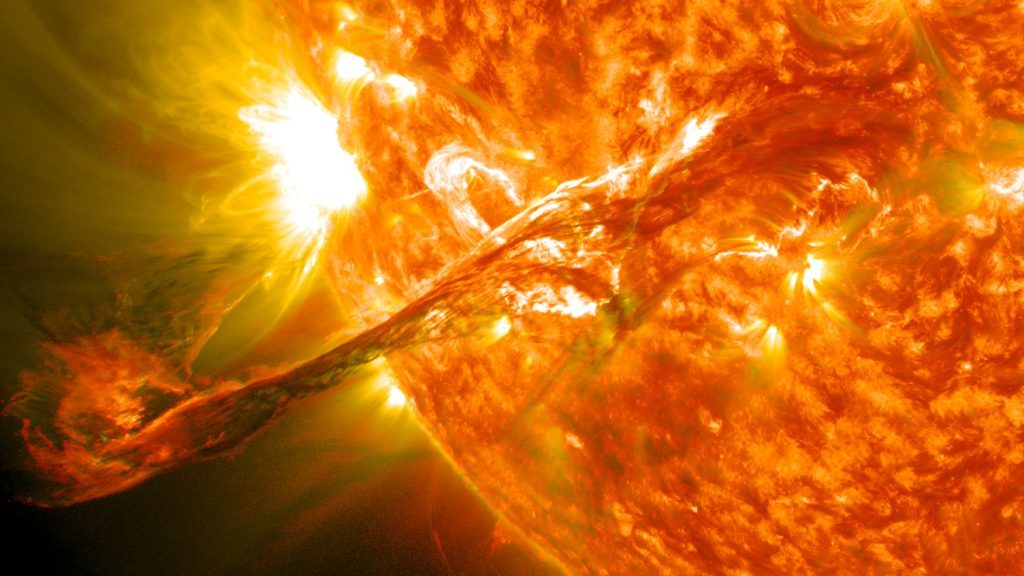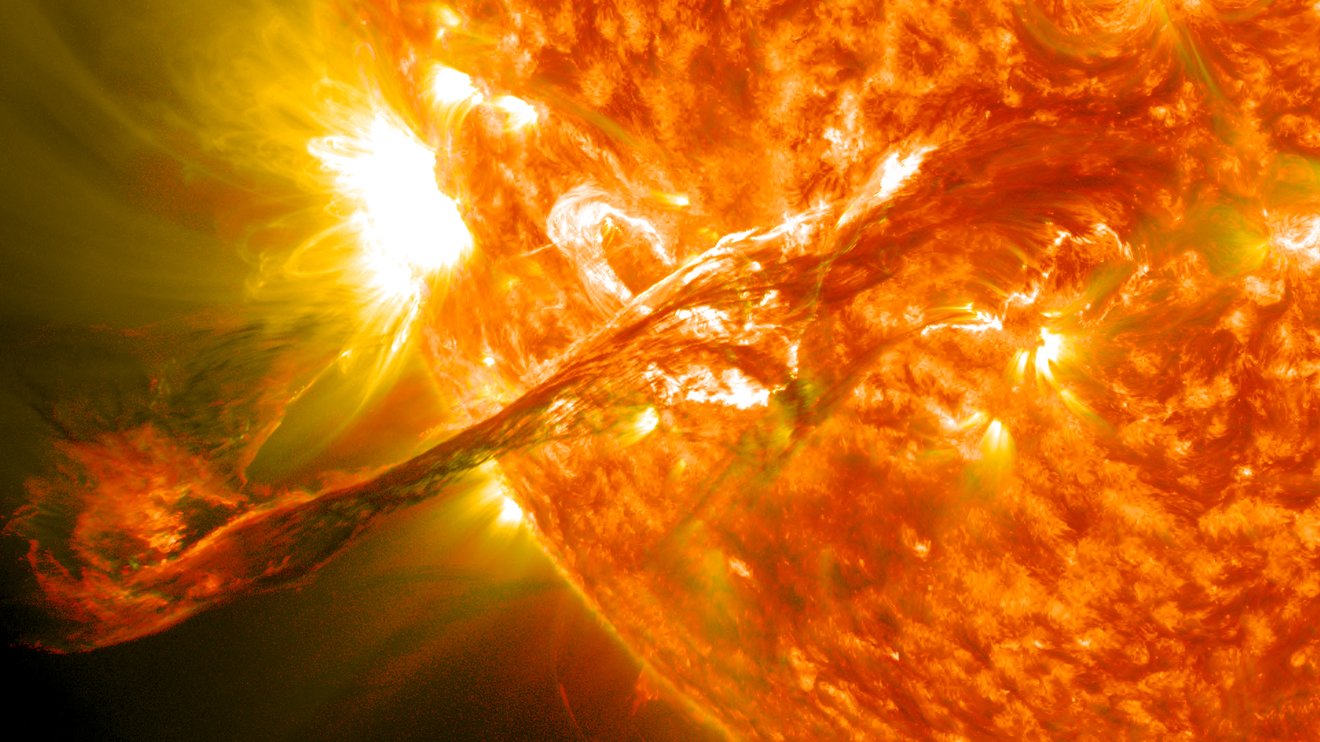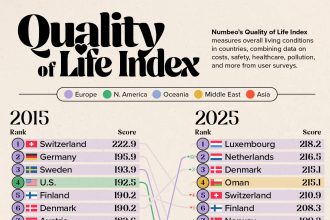A powerful solar storm is being felt on Earth tonight following a powerful eruption on the sun that could affect satellites, GPS systems and more.
At around noon Spanish time on Tuesday, scientists detected a coronal mass ejection (CME) travelling at an estimated 1,500 kilometres per second.
It means a burst of solar material is now expected to reach Earth between Wednesday afternoon and Thursday morning.
Experts have warned that the resulting geomagnetic storm could be ‘severe’, potentially affecting satellites, power grids and navigation systems. However, they stress that there is no direct biological risk to the population.
The European Space Agency (ESA) is closely monitoring the event through its network of space weather centres, gathering detailed data on what is being described as one of the most significant solar events in recent years.
Meanwhile, the British Geological Survey (BGS) upgraded its forecast to the maximum and said the storm could feed off another one creating one of the biggest ‘cannibal storms’ in 20 years.
In parts of Catalonia and Andalucia, the phenomenon has already produced a rare sight, with the aurora borealis visible from several locations.
Spain’s own Space Agency (AEE), working in coordination with its European counterpart, is tracking the storm to anticipate any potentially critical developments.
According to the Ministry of Science, Innovation and Universities, the effects over Spain ‘are expected to be limited and short-lived’. The ministry added that there would be no serious consequences for the public or for the operation of national technological systems.
Officials emphasised that Spain’s mid-latitude position, far from polar regions, greatly reduces the strength of any geomagnetic disturbances. As a result, no major damage or interruptions are anticipated to critical infrastructure such as energy networks or communication systems.
In practical terms, there may be minor interference in satellite navigation services, including small losses of accuracy in GPS and GNSS applications. Shortwave or high-frequency radio communications could also experience brief disruptions, though mobile networks, internet, and FM radio should remain unaffected.
Spanish-operated satellites, including those used for telecommunications, weather observation, and Earth monitoring, are not expected to suffer significant impacts. In some cases, automatic safety protocols may activate or brief data errors could occur, but without any lasting service interruption, the ministry confirmed.

‘Despite this being the most intense solar storm in recent years, and while continued vigilance is essential, all indications suggest the effects over Spain will be limited and short in duration, with no serious impact on people or key technologies,’ the ministry said.
Meanwhile, both the European Space Agency and the US National Oceanic and Atmospheric Administration (NOAA) are maintaining active surveillance of the solar storm.
The NOAA reported that the core of the storm is currently passing over Earth and may continue for several more hours, also responsible for the spectacular auroras seen across parts of Europe.
Geomagnetic storms are ranked from G1 (minor) to G5 (extreme). Earlier this week, the NOAA raised its alert to G4 (severe) as the ejected solar particles struck Earth’s magnetic field. The current level has eased slightly to G3 (strong), though the agency warns that conditions could still intensify again, with elevated activity likely to persist until Friday.








